Kay Nicol has lived a big life.
As a Scotswoman and a natural born story teller, Kay has plenty of amazing stories to share.
She has lived all over the world and now calls Ipswich home.
Kay has found genuine fulfilment and joy in life by helping others.
“If something needs doing, I do it,” she said.
“It’s amazing what you can do when you have to.”
Kay is a nurse by trade but after her husband, Brian, got a job in Sudan in the 70s, Kay packed up her three children, Julia, Louisa and David and headed to Sudan’s capital, Khartoum.
Brian took up the position of managing the computers for the University of Khartoum.
Computers in those days took up entire offices and did less calculations than a phone does now.
“One of the biggest adjustments at first was not being able to get milk powder for my baby,” Kay said.
“The milk would get delivered by donkey each day we had to learn the Sudanese way of doing things.”
Kay found very quickly that there was a need for a preschool as they weren’t any in Sudan.
“I started a preschool as there weren’t any, so I did it,” she said.
“Locals and children of the university staff mostly came to learn English.
“I had 17 kids who were from 13 different nationalities.
“I could also speak Arabic, which helped.”
Kay popped back home to Scotland and did a Steiner education course which looks at practical and intellectual skills being taught in a holistic manner.
“You teach them right from the start, you speak to them in English starting with a, b, c,” she said.
“We would finish class by 11.30am as it would be too hot after that.”
When her own children were old enough to attend boarding school, they went back to Scotland for their education.
“One a month my mum and dad would pick them up and take them home for the day,” she said.
They still lived in Aberdeen where her father had been a council building inspector and her mother also a nurse.
“My childhood in Aberdeen was interesting as my father worked as a building inspector and we travelled all over the country,” she said.
“While we had a flat in town, the rest of the extended family lived on a farm in the countryside at a place called Udny Station.
“I first rode my bike there where I was only eight, it was 13 miles.”
Her grandparents and uncles had cows, chicken and horses.
Kay remembers fondly investigating and hiding out on the farm enjoying the solitude.
“I spent a lot of time out there on school holidays and weekends when my parents were working,” she said.
“When my uncle was harvesting, he would put me up on his Clydesdale so that I was out of the way while they worked.
“I loved being up there and my little legs were not long enough to go down the side of the horse.”
Her father’s side of the family, last name Irvine, are part of the Douglass Clan which is the tartan Kay still wears today.
She still speaks Doric which is the native tongue for that area of Scotland.
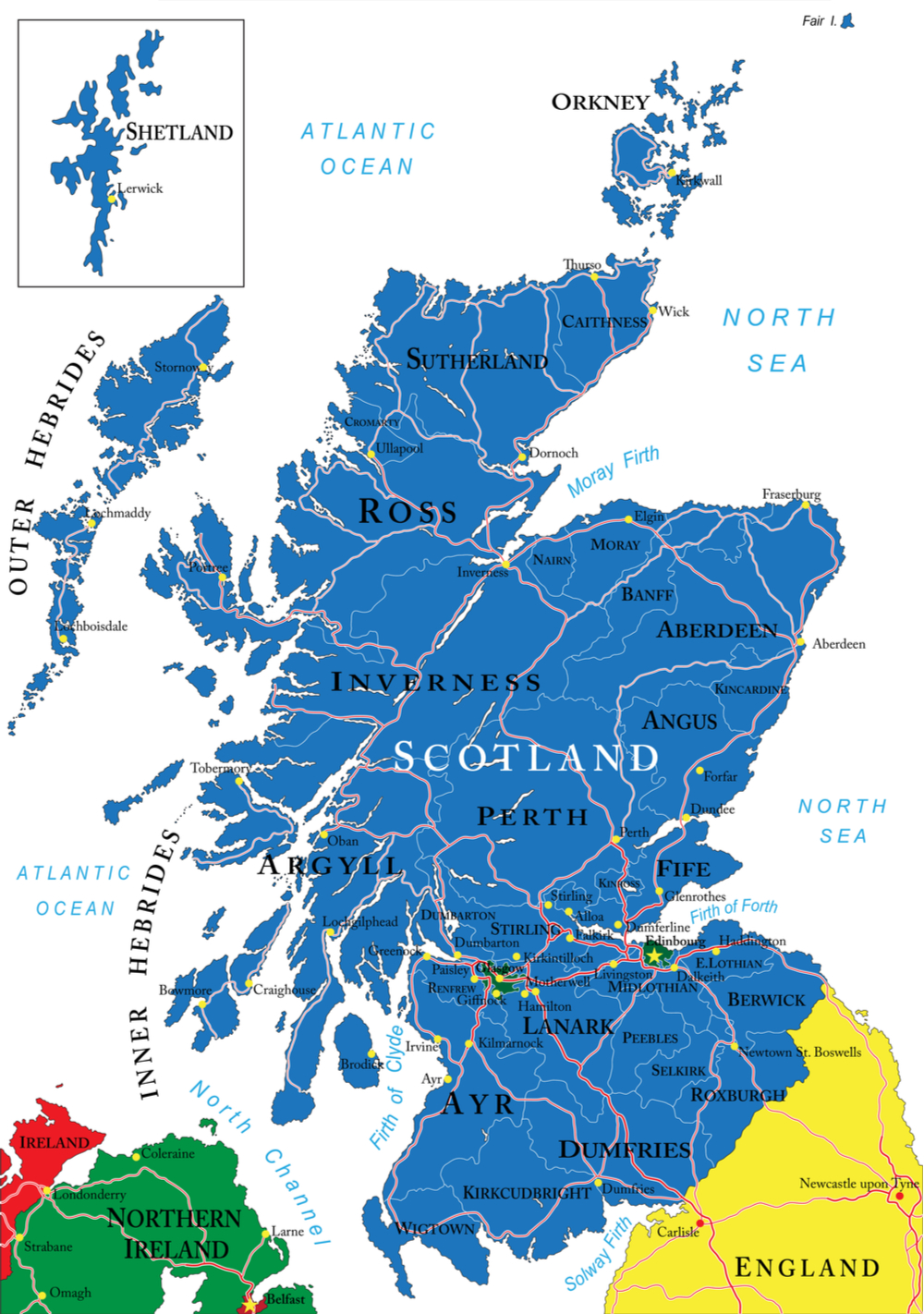
Facts about Scotland
Scotland covers the northern third of Great Britain.
It is surrounded by the Atlantic Ocean, North Sea and Irish Sea and shares a border with England to the southeast.
Scotland consists of more than 790 islands.
Famous for its castles, standing stones and battles and for their love of whisky, kilts and ceilidhs.
Its national flower is the thistle.
Most have heard the tale of the Loch Ness Monster and are familiar with Scottish bagpipe music.
The Kingdom of Scotland emerged as an independent sovereign state in the European Early Middle Ages up until 1707 when it entered a political union with England to create the new Kingdom of Great Britain.
The climate of most of Scotland is temperate and oceanic and tends to be very changeable.
As it is warmed by the Gulf Stream from the Atlantic, it has much milder winters (but cooler, wetter summers) than areas on similar latitudes, such as the Moscow region in Russia.
Although Edinburgh is the capital of Scotland, the largest city is Glasgow, which has just over 584,000 inhabitants.
The Great Glasgow conurbation, with a population of almost 1.2 million, is home to nearly a quarter of Scotland’s population.
The population according to the 2011 census was 5,062,011.
Whisky is one of Scotland’s most well-known exports.
“I’ve still got something of my heritage,” she said.
“I like to celebrate Burns Night and St Andrews Day (Scotland’s official national day) and get dressed in my tartan.”
In the early 80s, Brian got a job in Saudia Arabia which was rather confronting for Kay as it was quite restrictive for women and she was not able to enjoy the freedoms she had in Sudan where she was able to travel freely.
One year later Kay packed up again when Brian took a job as director of computing at the University of Papua New Guinea.
Again, Kay volunteered her time and skills to open a preschool there as there wasn’t one.
“I started the preschool up at my house,” she said.
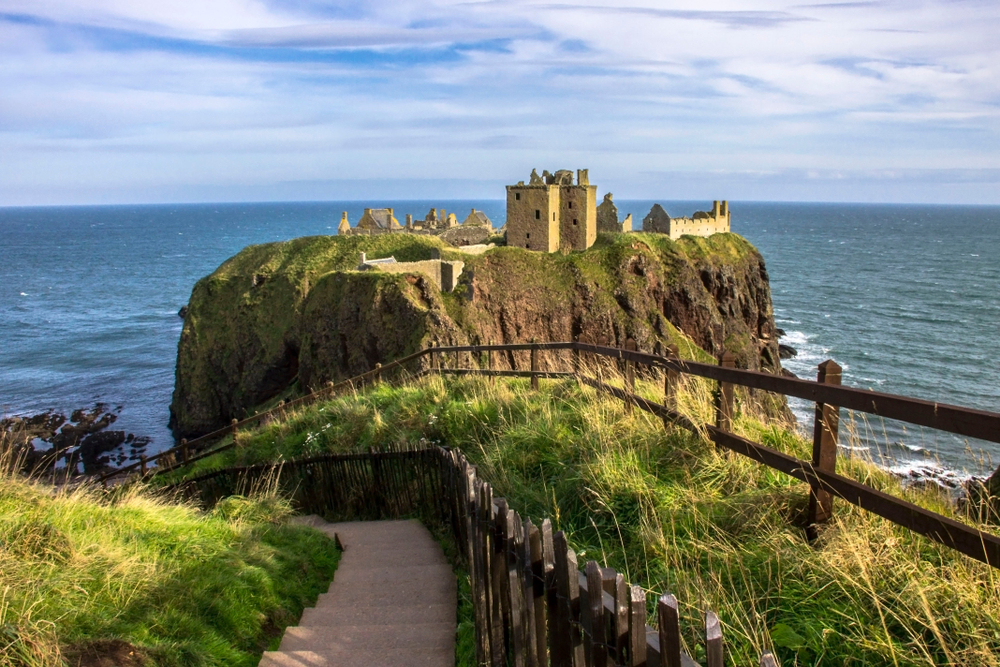
Dunnottar Castle, Stonehaven, Aberdeenshire, Scotland
While Kay’s children were at university in Australia, she went down to Bendigo to work for an agency as a social worker.
She did the necessary course and when she went back to PNG she started a volunteer counselling program for people diagnosed with HIV.
“I wanted to stop AIDS,” Kay said.
Kay worked hard to set up the service so that the local social workers were in charge and able to take it over when it was time for her to leave with the director and team leaders all locals.
When funding was in doubt, Kay went to her church and that is how it became Anglicare.
Anglicare now coordinates what has become the national Anglican Adult Literacy Program, with 80 schools and 2,500 learners enrolled.
And over time, Anglicare has further diversified into areas such as water, sanitation and hygiene, child protection, and even disaster risk reduction.
“To this day it is still running and employs over 100 people,” Kay said.
“Partly because of my religious beliefs, I believe I am here for a greater good.
“I believe that this is the work I am meant to be doing.”
In 2014 Kay and Brian came to Australia to live.
When she was looking for a place to call home, she stood on the rise she now lives, which looks out over towards the mountains in the Scenic Rim.
The sun was setting and was reflecting off the mountains which were glowing with all the colours of twilight.
“I thought, yes, I’m a country girl and this will suit me well,” Kay said.
“All the time I had spent in Port Moresby, I had been looking at the sea, so it was good to be in the country as I was as a child.”
Kay spends her days volunteering still at the Rosewood Community Centre doing whatever is required.
Kay has been mistaken as a matron when she has been on wards of hospitals.
She thinks it is because of the way she holds herself, she looks people in the eyes and doesn’t let anyone push her around.
“It’s the Scottish in me,” she said.
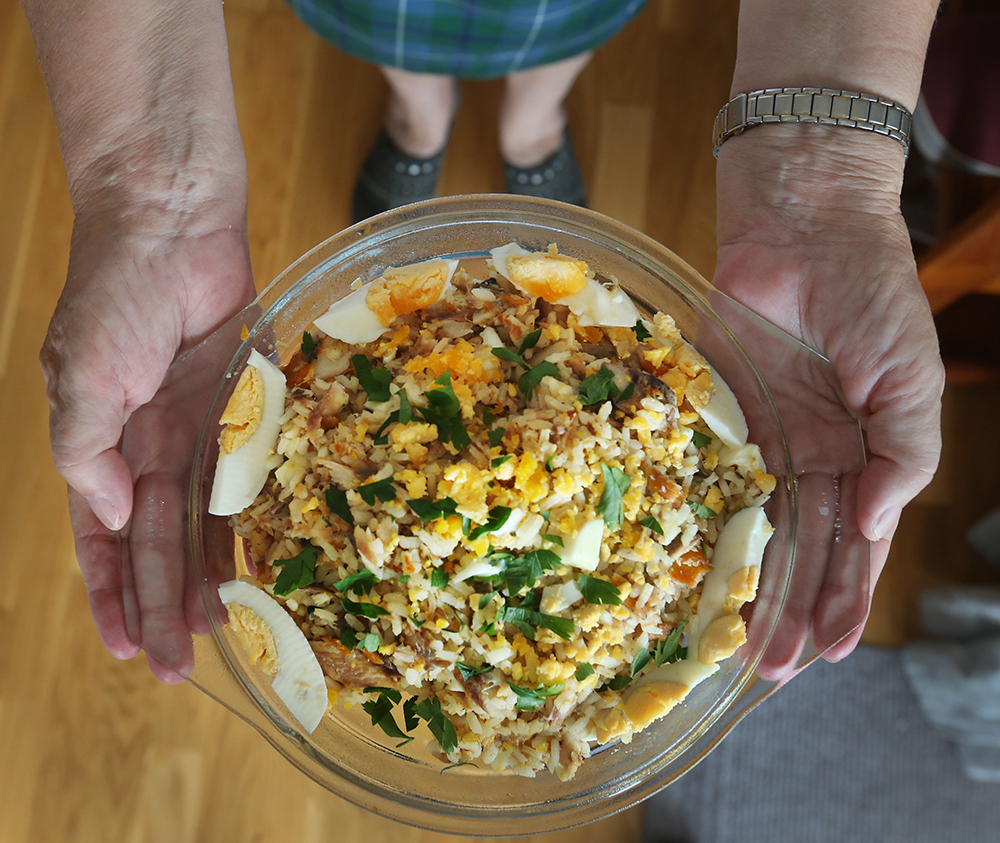
Recipe – Kipper kedgeree
“This is a traditional dish and this is the recipe that I developed”, Kay said.
“I mainly made it when I wanted a Scottish meal and I couldn’t get haggis.
“I would eat Kippers as a child and we would have kedgeree as a child, unsmokee with rice and things.
“I always said anyone who is going bush, should it wityh them so if they get lost they can be found… by the smell.”
Ingredients
250g cooked fish
120g boiled rice
Salt & pepper
1 hard-boiled egg
50g margarine
Chopped parsley
Method
Remove the skin and bones from the cooked fish and flake it.
Chop the white of the egg and half of the yoke.
Melt the margarine and add the fish egg and rice.
Make very hot and season well.
Pile neatly on to hot ashet (Scottish term for plate).
Garnish with the other half of the egg yoke (grated) and sprinkle with the parsley.

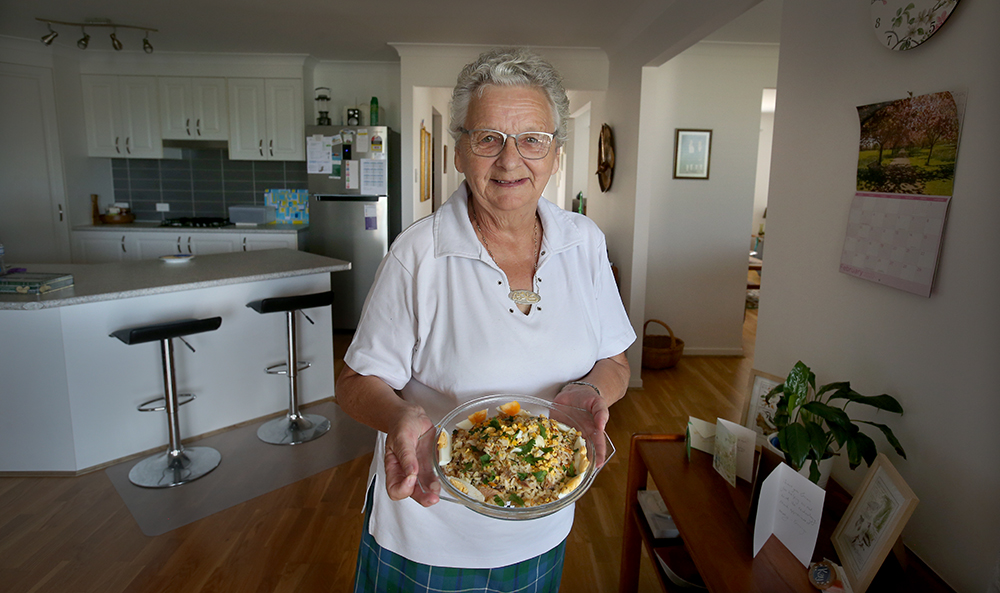

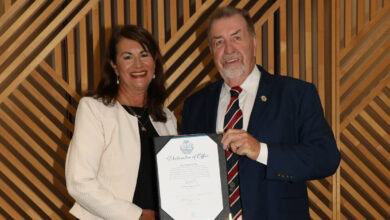
Wow. What an interesting life!